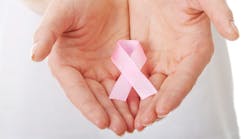A race against time: How your dental office should handle medical emergencies
We’ve all heard it said that we save teeth, not lives. But I’d like to challenge that mindset. If a patient experiences a life-altering emergency in your chair, are you prepared to greatly improve their outcome, perhaps even save their life?
What happened in our practice
We were humming along with our usual Monday morning energy. We gathered for our daily huddle, Dr. Adams scanned the schedule, and I donned my lab jacket and loupes.
Mrs. Smith sat in the reception area, engrossed in a magazine. When her name was called, she rose with a smile, eager to see her favorite hygienist. But something caught my attention: Mrs. Smith seemed off. As she shuffled toward the operatory, she paused to catch her breath and her skin was clammy.
I reviewed her medical history: she takes medications for hypertension, thyroid issues, and anxiety. Her vitals appeared unremarkable. Yet, her demeanor hinted at something more. Midway through her periodontal maintenance appointment, Mrs. Smith interrupted. “My jaw feels tight, and my shoulder hurts.”
Panic surged within me. Could this be a heart attack? I mentally scanned the checklist: sweating, fatigue, jaw pain, shortness of breath. Mrs. Smith ticked all the boxes.1 Why hadn’t we reviewed our emergency plan during our safety meetings? And had anyone checked the contents of the medical kit lately?
Summoning my calm, I said, “I’ll alert Dr. Adams and call 911.” But Dr. Adams had stepped out. Now it was up to me, the hygienist, to save Mrs. Smith. The medical kit and AED (automated external defibrillator) sat nearby. I opened the kit, my mind a whirlwind. Epi? No. Nitro? Yes, she was experiencing chest pain. Possible heart attack? Yes. Aspirin? Yes. I handed her two, hoping it was the right choice.2
The paramedics arrived in seven minutes and 25 seconds—an eternity compressed into each second. As the paramedics took over, I stepped back, my lab jacket damp with sweat. Mrs. Smith’s life hung in the balance, and I’d hung on the edge of uncertainty. But in that chaotic moment, I’d become more than a hygienist—I’d become a lifeline. We don’t just save teeth, we save lives.
You may be wondering; how can my office prevent chaos during a medical crisis? How can we organize our medical kit and become comfortable with its contents to administer them effectively?
Formulate a medical emergency plan
Practice makes prepared: Rather than practicing during an actual emergency, conduct mock drills with the entire dental team. Simulate emergencies, pull out the medical kit, and rehearse administering medications.3
Have an emergency action plan (EAP): Designate roles for your team members. Who calls 911? Who performs CPR? Who retrieves the AED and medical kit? Having a clear EAP ensures everyone knows their responsibilities.2
Have a guardian of the medical kit: Assign someone to oversee the medical kit. They’ll need to regularly check its contents and ensure it’s up to date. A monthly review ensures readiness.
Understand the medical kit and know the meds: Familiarize yourself with the medications in the kit. Understand their indications, contraindications, and proper administration. Don’t wait for an emergency to decipher labels. The seven essential medications that should be in a medical kit are epinephrine, nitroglycerin, glucose, diphenhydramine, aspirin, Narcan, and albuterol.2
Create cue cards for common medical emergencies: These quick references can guide you during high-stress moments.
What to do during stress and decision-making
Stress impairs cognitive function. Make your plan foolproof. Simplify steps, use visual aids, and practice until it becomes second nature. Consider ordering kits tailored to your practice. Some come with step-by-step instructions for emergencies. They’re like cheat sheets for saving lives.
Don’t wait for an emergency. Practice proactive preparedness now. With the right steps in place, you can confidently say you save teeth and are ready to save lives. Remember, dental professionals aren’t just about oral health; we’re guardians of overall well-being. So, let’s organize, practice, and be ready, then when chaos strikes, we’ll be able to deliver peace of mind.
References
1. Warning signs of a heart attack. American Heart Association. https://www.heart.org/en/health-topics/heart-attack/warning-signs-of-a-heart-attack
2. Donaldson M. The Art of Dental Therapeutics: What Needs to Be in Your Medical Emergency Kit and Why! Presented at the 159th Chicago Dental Society Midwinter Meeting, 2024.
3. Malamed S. Preparation and management of medical emergencies. J Dent Emer Med. 2019;7(2):123-136. doi:10.1234/jdem.12345
About the Author

Amie Granger, RDH
Amie Granger, RDH, founder and president of POM Medical, is a clinical dental hygienist in Battle Ground, Washington. She upholds the highest standards of patient care and delivers peace of mind to dental providers during medical emergencies. Amie is also a speaker on dental medical emergencies, a devoted wife, mother of four beautiful children, and an avid coffee enthusiast who enjoys the outdoors. Amie can be reached at [email protected] or pomnw.com.




